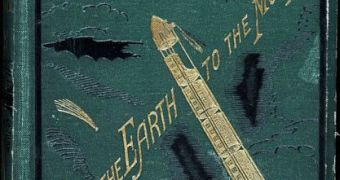The father of science-fiction, Jules Verne, was undoubtedly a visionary man, since many of the things he imagined were shifted to reality at some point. Others, though, didn't.
The second most translated author in history (after the most prodigious crime-novel author Agatha Christie), Jules Verne is still one of the most read writers in the world, especially among teenagers. Well before technology ever recorded a major breakthrough and progress, he imagined things like underwater manned vehicles, air travel, and even space journeys. Of course, he also thought of mid-Earth journeys or North Pole individual ownership, which, at least so far, have not turned into reality.
In one of his most famous books, “Twenty Thousand Leagues Under the Sea”, captain Nemo roamed the under seas in his own self-developed submarine-like device called “Nautilus”. The title of the book addresses the overall distance covered by the submarine, which is about 80.000 km (49.710 miles), since a French mile - which the author used - is equal to 4 km (2.48 miles). It is truly remarkable that his idea inspired scientists to try to build such a device which now comes in so many shapes and uses.
“From the Earth to the Moon” describes the journey of a crew of three people launched in a projectile from a huge cannon. The launching part is where the author made a mistake, since the acceleration resulting from such a device able to propel a large item to the moon would exceed 1.000g as it would have to be extremely long. But that aside, he made some very accurate calculations, considering that moon trips were completely out of discussion at that time. Also, the similarities between his story and the real Apollo missions are striking. The crew of three people, the projectile size, the launch from Florida, and the crew's parachute landing upon return, these are all facts also characteristic to the Apollo space missions, not to mention his canon's name, Columbiad, very close to that of the American mission's command module, Columbia.
Many of his novels mention enormous and very aggressive squids located in the cold regions of the planet's oceans. Although the Colossal Squid is known to only populate the deepest and coldest waters, they are not as frequent, as immense and as voracious as pictured by Jules Verne. The largest specimen found so far only reached 10 meters (about 33 feet), although beaks have been found indicating possible lengths of 12-14 meters (40-46 feet).
Probably one of his best works from a literary point of view, “Journey to the Center of the Earth” is also the most flawed when it comes to exact science. It reveals the hypothetical adventures of a professor who is accompanied by his nephew and a guide while he aims to descent into an Iceland volcano in order to exit on the other side of the planet, in Italy. During the travel, they encounter plants, rocks and animals more and more ancient as they get closer to the Earth's core.
“The purchase of the North Pole” book imagines exactly this. In order to lay their hands on the natural coal resources found there, people from the same club as those who went to the moon think of buying Earth's northern pole. But the current political situation hasn't allowed for this to happen just yet, as the neighboring countries' coasts are limited to 200 miles (322 km) around, the rest being under the administration of the International Seabed Authority. The closest thing that happened was the American purchase of Alaska from the Russians for $7.200.000 (about $90.750.000 in 2005 dollars) on April 9th 1867.
“The Carpathian Castle” tells the story of some frightened villagers who kept hearing strange voices and seeing weird shapes coming from a castle. The later investigations by an intrigued visitor discovered that the sounds were recorded and played back, while the images were holographically transmitted. This proves that Jules Verne was the first to imagine the gramophone or the holograph.
In memory and honor of the great visionary writer, a European spacecraft which has just returned from a six-month mission tasked by the European Space Agency (ESA) bears his name.

 14 DAY TRIAL //
14 DAY TRIAL //